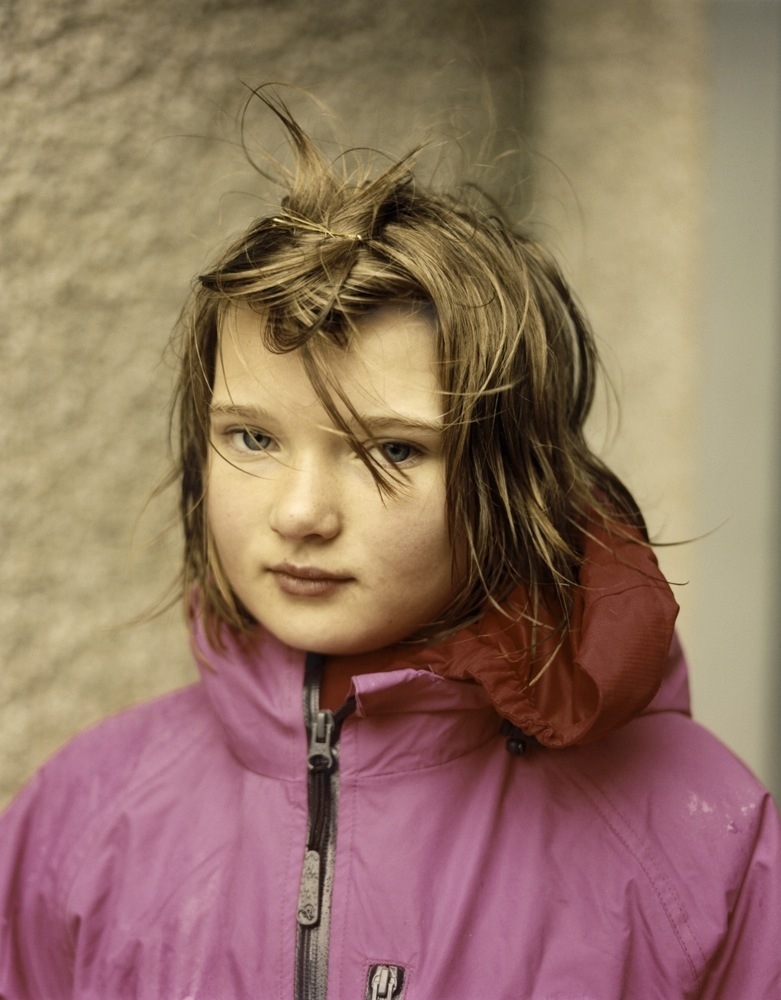The morning before his first-ever solo exhibition opens in Brooklyn, Jamie Hawkesworth has planned a surprise Manhattan tourist outing for his parents, who are excited. They’ve just arrived from Hawkesworth’s native Suffolk, but show no signs of jetlag — only a palpable sense of adventure. They’ve never been to New York before and are looking forward to cycling through Central Park. I know this because I’m sitting between them and their son — one of the most compelling photographers working today — on a couch in the Mercer Hotel’s cafe, where we’ve met to discuss the 51 photographs and short film he’s exhibiting at Red Hook Labs tonight.
“We sent out some emails inviting people to the show, and one guy responded ‘Great, but it’s in bloody Red Hook,'” says Hawkesworth of the shipping neighborhood home to the 11,000-square-foot project palace hosting A Short, Pleasurable Journey: 51 Photographs by Jamie Hawkesworth. “I fucking love that,” he continues, “because it plays into the show’s theme so perfectly. For lots of people, just coming to the show will be some kind of a journey.”
Hawkesworth’s photography — celebrated for its rich tones and textures as much as its character, optimism, and occasional quirk — represents a confluence of documentary, portrait, and fashion sensibilities all guided by a central principle: the importance of travel. He’s shot countless commuter portraits at Preston Bus Station, the massive transportation hub located in the college town where the 28-year-old Hawkesworth originally set out on a forensics course. The work has become, as Preston Bus Ltd’s Fiona Whalley told me via email, “part of the fabric of the Preston Bus Station itself.” Beyond Preston, he’s found teen goths on the British coast in Whitby and backyard pole vaulters in Hartlepool by the North Sea. Once, he took the Trans Siberian railroad alone to shoot landscapes for Miu Miu’s resort campaign. Oh, and he’s been to Antarctica.
A Short, Pleasurable Journey distills Hawkesworth’s constant sense of discovery into 51 images including natural scenes, styled editorials, and street kids, making his work feel at once intimate and unexpected. As his dad delights in tracing routes to Brooklyn along his handy map, it’s not difficult to see where Jamie’s compulsive drive to fully experience and share his surroundings came from.
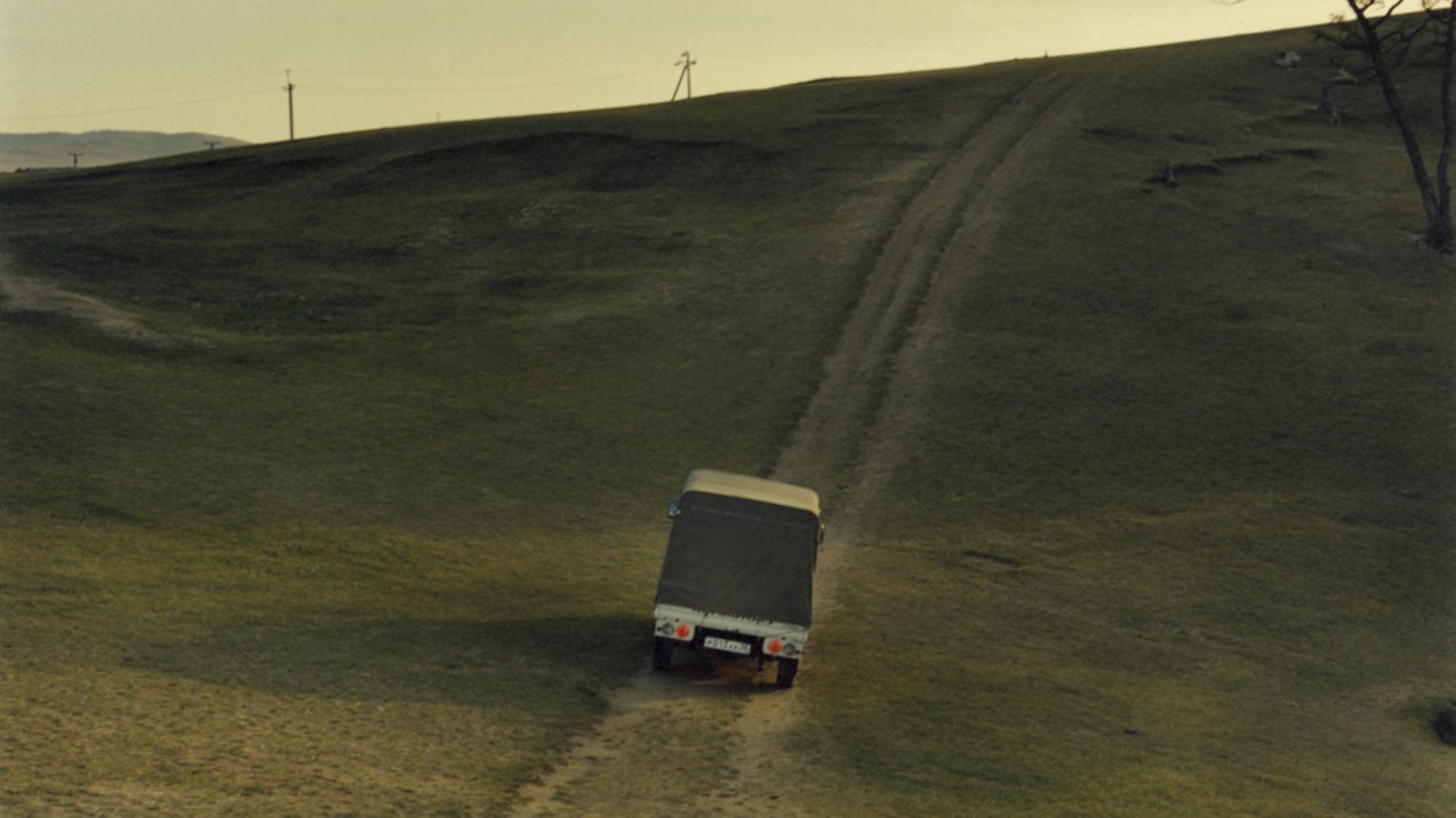
You’ve been in New York for a few days. Have you been photographing here?
No, I actually haven’t. I like New York, but it doesn’t really inspire me that much if I’m being honest. I think if I went out consciously, it might open up a bit more to me. But Red Hook, where the show is, is an amazing place.
Why show here then?
Jimmy [Moffatt] — the guy I’m doing the show with — owns Red Hook Labs and organizes educational programs with kids from the area. Originally, I was just going to do a talk for one of those programs, but it’s kind of expanded into a show in the gallery and a talk with the kids about it, so we’re doing that on Saturday. It just felt like a really great opportunity to do something like that, regardless of setting.
What’s the space like?
It’s huge! That’s why there’s a lot pictures in the show.
How did you arrive at 51?
I’ve always thought it was really important to get out there and take photographs — to go on a journey, so to speak. When I first started taking portraits of people, I’d take the train somewhere in England and see what I came across — it became an important part of the way I was working at the time. When this idea of the exhibition came up, I wanted to see if I could reflect that sense of going somewhere over a period. Jimmy came to my darkroom in London and we looked at all of the images I’ve done over the past four years. 51 came totally naturally.
Some of the pictures are landscapes, another — the girl in the blue suit — I recognize from the first editorial you ever shot. What made you want to include work for fashion publications in this show?
In my head, there are a few distinct editorials that have meant quite a lot. That Man About Town story with the girl from South Shields was the first time [stylist and Hawkesworth’s longtime collaborator] Benjamin Bruno got in contact with me. He said, “We should just take a bag of clothes and go find kids to shoot.” I’d spent so much time photographing kids on the street, but I never changed them — just taking their portrait was always enough for me. When we did this fashion project, I realized the potential of transforming someone into something completely new. So that’s why we included that in this show, because it was a particular moment that felt important in that journey of working out what I’m doing. Each picture from editorials are just distinct little moments in which things started to make a little bit more sense.
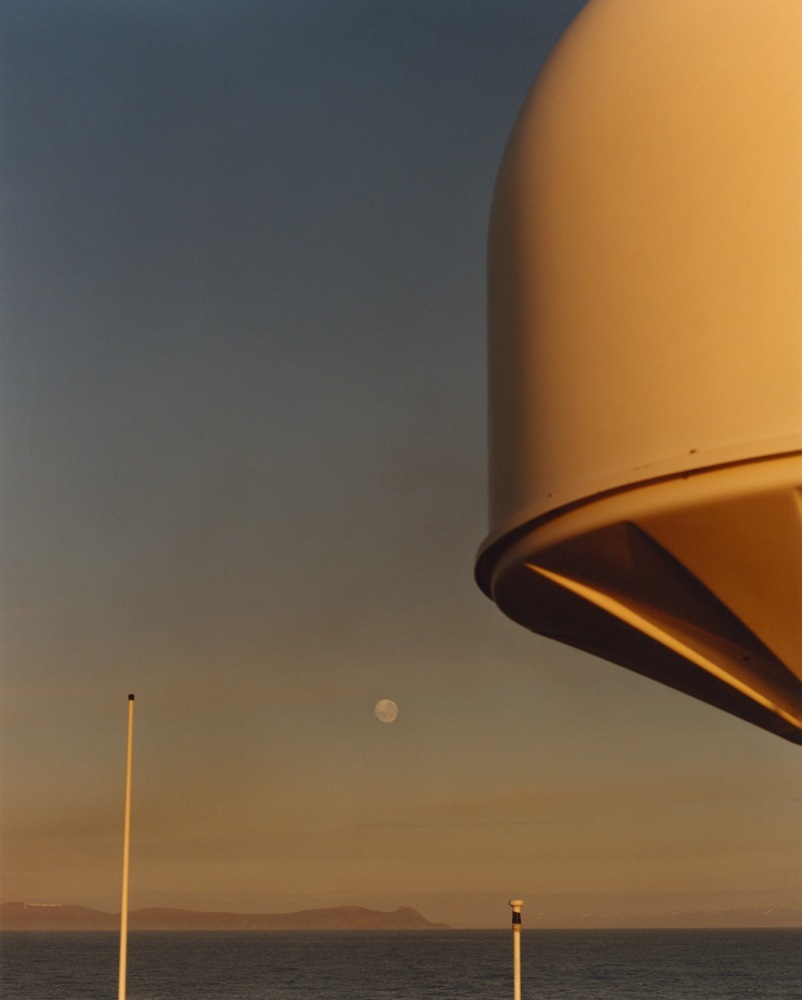
You’ve photographed your travels throughout England extensively, but you’ve also done a great deal of international work — shooting Ai Weiwei’s portrait in Beijing and photographing Opening Ceremony’s Elvis collection using Memphis locals. Where else does this show take us?
There’s a huge print and a small print of the Elvis clothesline photo and we’re not quite sure which one to use yet. I really like the huge one, but it’s massive. So there’s some from those Memphis and Beijing projects, but also from Antarctica, Scotland, Kashmir, Hawaii. There’s no limit to where they’re from, because the scope only puts more emphasis on the sense of a journey.
Does your creative process differ when you’re working outside of the UK?
Never. I did a project on a bus station in Preston, and I didn’t ever really want it to be a project that commented on society in Preston or the way that adolescence is developing in that area. When I go to Hawaii, I’m not trying to make a comment on even the way Hawaii looks. It’s just sort of a basic appreciation of everything in these places. If something attracts my eye, I shoot it; I’m just taking pictures, so the process doesn’t really change. I just like to go to a place and see what happens.
Speaking of Preston, let’s talk about your work there. How did you first begin shooting at the bus station?
About four years ago, my tutor invited me back to university to do this project on Preston Bus Station. He wanted to produce a little newspaper of my color portraits, his black and white film photography, and his friend’s found objects. There’s an amazing influx of people all of the time from all over the country. It was a perfect hub to take portraits, and that’s what really attracted me. I kept going back.
It was going be demolished a couple of years later, so I thought it was important to go back and spend a month there to work on a more extensive project, one I moved back to Preston from London for a month to do. Because it was going to be demolished, I thought it would be interesting to do a tribute to the bus station through moving image, so I found all these school kids that played instruments and got them to play in the bus station.
You’ve worked with Jonathan Anderson for some years now. Do you feel that returning to a particular place — Preston or in his case, Ireland — informs your shared sensibilities in any way?
I started to do projects recently in which Jonathan was styling his collections, as in we were doing a fashion shoot and he was putting the clothes on and articulating the look. It was the first time I really worked with him on that level and the moment I realized how similar our sensibility is towards creating a fashion pictures. I always knew we have a similar sensibility, really, but that was the moment where it hit home, just by the way we were working together. When we do a commercial shoot, Jonathan’s there of course, but he just wants me and Ben to do our thing. So when it came to just me and him, I started to realize how similar we are. In terms of loving or connecting to a place, I don’t know if it’s even that deep. He’s always just trusted me and Ben; we’re free to do what we want.
Is it difficult shooting for other publications or brands when you don’t have that relationship?
It is, definitely — particularly commercial work. Benjamin and I started off doing anything we wanted and felt it was quite strong, so when you go to another brand and it’s more restrictive — obviously, because they don’t have that same sense of trust — it can be hard to adapt. But I realized quickly that part of learning to do fashion is that you still have to — even in a situation where you’re so completely far removed from what you’re comfortable with — make your picture. It’s a good exercise for sure, and I’m actually glad that we can’t just do what we want all the time. It wouldn’t be right.
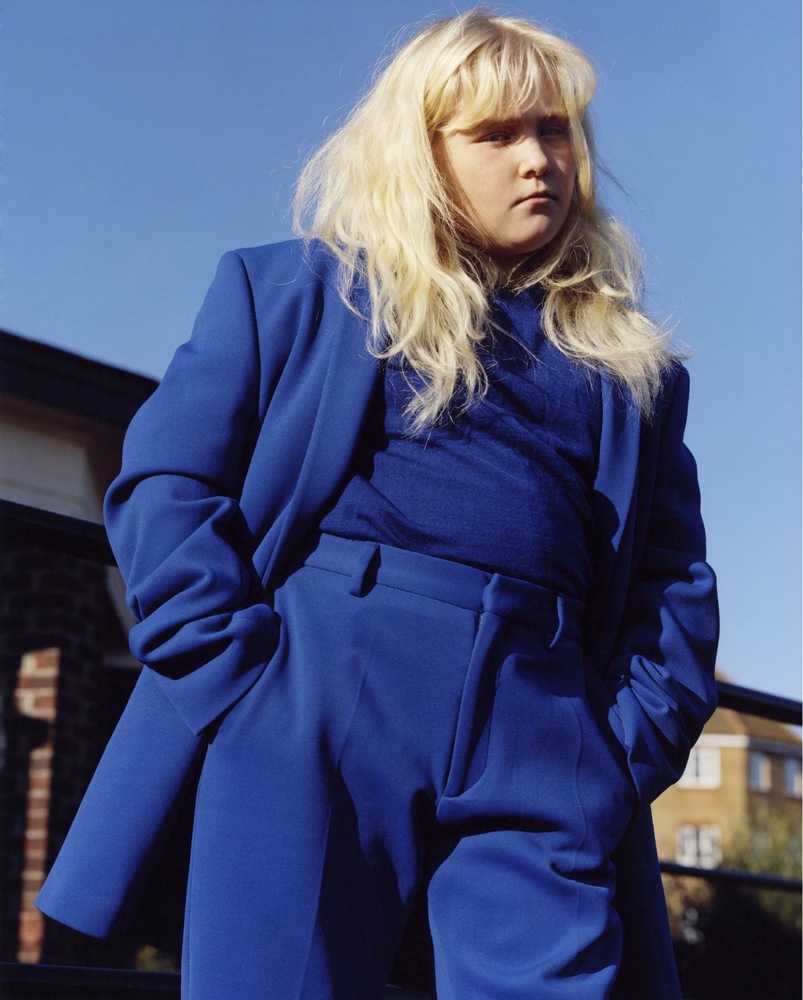
Why do your first show now?
It’s funny: I always print everything myself, so there are hundreds of prints in my dark room, but I’ve never felt much motivation to show them outside the context of a mag or editorial. And actually, I have had an exhibition before; when I did the second round of the bus station pictures, I showed all of them in the bus station, about two years ago. We found this local printer who prints on vinyl, and since the whole bus station is tiled, the pictures creased into the tiles. Originally, they were going to go down with the bus station when it was going to be demolished, but because the station got saved, they’re still there. I kept going back to do more pictures or to just see the place, and the prints started to sort of peel away — there’s all this amazing decay. It’s quite full circle.
How are you feeling about the show?
Pretty nervous! I’ve never gotten anything framed. That whole process of picking the frame, picking the size, picking the order, picking where it should go — they’re all brand new things to me.
I suppose everything had to be reprinted.
Yes, it’s all reprinted.
Did anything change in that process, looking at them years later?
Yeah, some of them got less warm. When I first started taking portraits of kids around England, places I went were always quite cold in weather and color. So when I was printing the pictures and I left them like that, they didn’t have the optimism that I wanted. I was always conscious that I didn’t want to go to these places in England that were on the rougher side and produce a series of pictures that had a slightly negative aspect, even in my own head. So printing them warmer — warming up the situation — was always a way to keep it feeling optimistic somehow. It’s incredible how much color can change pictures.
I started printing everything warm. Even when I was in a warm situation — a kid standing in the sun — I would still, just naturally, warm it up even more. When I was making prints for the show, I realized that in some situations, I didn’t need an extra layer of, well, me. Printing like that — putting a cast on the picture — is just another way of me plonking myself on the picture. I realized that they didn’t really need it that much; I realized it’s enough. So I’ve kind of cooled down some prints in the show a little bit; they have shifted. But it’s a very subtle shift in atmosphere, you might think they still look quite warm! I still want them to feel like my pictures.
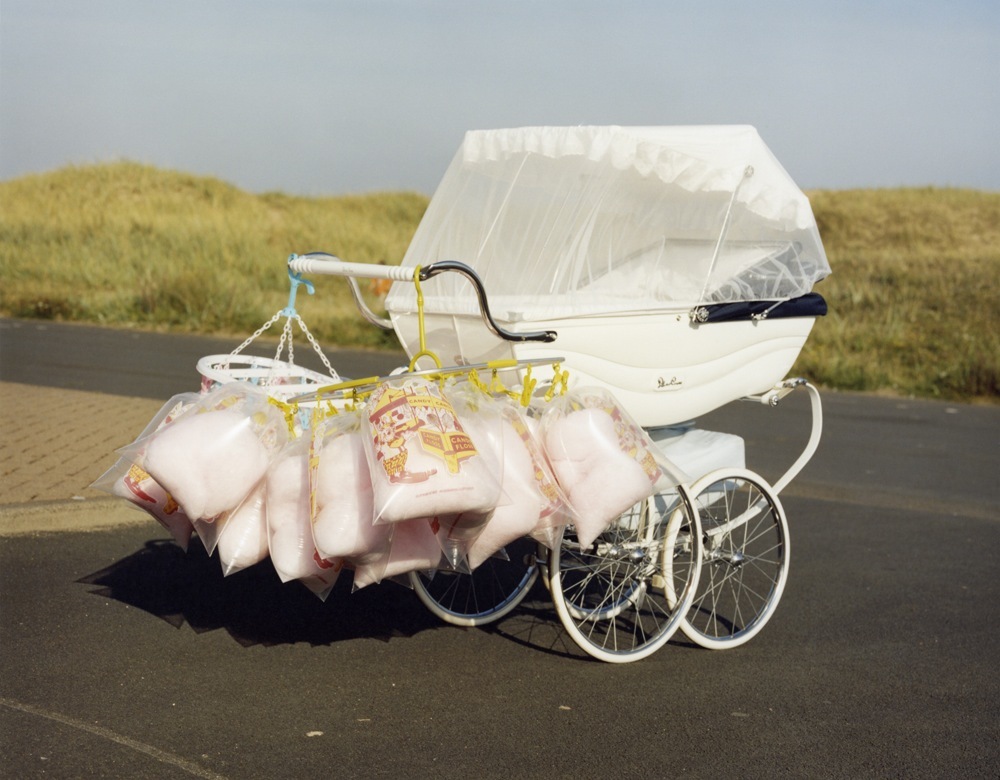
You still have your phone number on your website.
Do I? I suppose I do.
Is that because you became Alasdair McLellan’s assistant by just calling him up?
Well, I called his assistant. I used to call so many photographers. First, I wanted to assist a guy called Nigel Shafran. He had his number on website, so I just rung him up, cold call. Nigel is an eccentric but introverted character, so it’s a bit strange he had his number on there in the first place — he’s taken it off now, after that! We’ve become quite good friends and we always laugh about it. But I didn’t put my number on my website for that. I was an assistant for about two years, so I think I probably put it up in the hope that someone would call me back.
Has anyone called you out of the blue?
Yeah, a couple of times. One guy called recently because he wanted to buy a photograph. And I must say, I never answer my phone. Not because I think it’s some weirdo or anything, but because I’m just really bad at answering it. It was ringing and I remember even being surprised at myself for answering it. It was a guy who wanted a photograph, one that was in the show. I told him I’m having a show and that it’s for sale in the show, but that I can put it aside for him. But when told him the price, he didn’t seem to want it — he was found very surprised. It’s not that expensive, really, but I think he probably thought it was going to be a hundred quid!
If anything, what do you hope people take from the show?
I’ve always said to myself that I’m making the most of my time taking photographs; I’ve found something I really love so I’m just going to fucking do it. If people go to the show, I hope that love of photography comes across in some way. I completely appreciate the most conceptual photography ever, but when I go to a William Eggleston show or a Bruce Davidson show, for example, I feel a classic sense of appreciation of a photograph —I come away with this warm feeling of photography, somehow. And I’m not saying that my work does that, but in an ideal heavenly world, I’d love it if people would feel that same sense of photography.
To me, photographers like Eggleston or Bruce Davidson seem to profoundly appreciate not necessarily their subjects — because sometimes they’re passing strangers — but just the action of being in the world taking those photographs.
Yeah, completely; that’s a great way of seeing it. Just being a photographer — that commitment to time spent taking photographs, because that’s what it is. To me, it’s not a set up, conceptual act; it’s spending time by yourself with your camera taking photographs. And the more time you spend — the more you travel — you’re feeding your way of seeing. Anything could come around the corner and it could be a photograph. You can appreciate it, you can try to understand it, and it’s fantastic.
‘A Short, Pleasurable Journey: 51 Photographs by Jamie Hawkesworth’ is on view at Red Hook Labs between April 15 and April 24. Its opening reception is tonight, April 15, from 6 – 9 pm. More information here.
VOTE for us at this year’s Webby Awards for Best Fashion And Beauty Website
Credits
Text Emily Manning
Photography Jamie Hawkesworth
